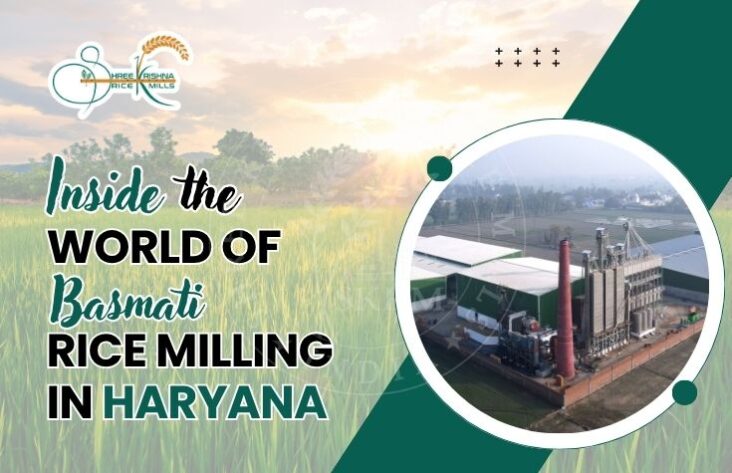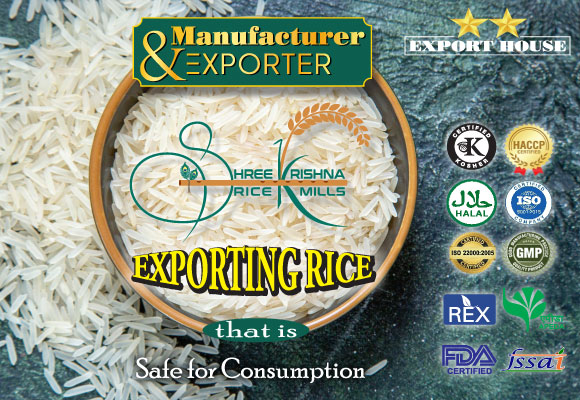Inside the World of Basmati Rice Milling in Haryana

As a Basmati rice miller, I’ve spent years watching each grain pass through my machines—listening to the stories they tell. From the lush green paddy fields of Punjab and Haryana to the polished, aromatic grains packed for kitchens across the globe, every grain carries a journey of pride and pain. And while Basmati rice continues to be celebrated for its exquisite aroma and texture, the path from field to fork is becoming increasingly difficult.
Here’s a ground-level view of the challenges we face today.
- The Burden of Uncertain Yields
Many don’t realize this, but Basmati is a delicate crop. It needs time, water, and care. Farmers often choose it over high-yielding hybrid rice because of its export potential. But low yield, high input costs, and unpredictable weather make the decision risky. When yields fall short, it affects us millers directly. Low supply drives up raw paddy prices and squeezes our margins. - Water Woes and Climate Stress
Basmati thrives in water-rich conditions, but groundwater levels in our region are depleting rapidly. Climate change has only made things worse—unseasonal rains or early frost can damage an entire harvest. As millers, we can’t process what doesn’t arrive. The uncertainty makes it harder to plan procurement, storage, and exports. - Export Market Pressures
Most of our Basmati rice is meant for international markets—Middle East, Europe, and North America. But we’ve seen consignments returned or rejected due to pesticide residue levels, especially in the EU. It’s frustrating because smallholder farmers don’t always have access to the right training or safe agri-chemicals. One mistake in the field can ruin an entire shipment at the port. - Cost of Compliance
Meeting export standards is getting harder and more expensive. Residue testing, certifications, fumigation, packaging, labeling—all add to our operational costs. And yet, international buyers constantly push for lower prices. We’re caught between rising production costs and falling selling prices. - Lack of Reliable Varieties
There’s an increasing problem with spurious seeds and inconsistent grain quality. Sometimes, paddy looks like Basmati but doesn’t meet aromatic or elongation standards after milling. As millers, we spend extra time and effort sorting and grading, and still face quality complaints from buyers. The lack of a standardized seed system is hurting the entire value chain. - Stubble Burning & Legal Scrutiny
While farmers face penalties for stubble burning, we too bear indirect consequences. Delays in harvesting due to shifting weather and legal action over environmental violations can impact the entire supply timeline. A few years ago, delayed harvests meant we couldn’t fulfill orders on time during the Diwali and New Year export windows. - Infrastructure Bottlenecks
Post-harvest losses are high. Many farmers still transport paddy in open trollies, exposing it to dust and moisture. Warehousing is limited, and even state-run procurement lacks coordination. We’ve invested heavily in modern milling machinery, but without a cold chain or proper drying infrastructure upstream, much of that quality gets lost before the grain even enters our gate.
What Can Be Done?
We’re not giving up—Basmati is our heritage crop, and it deserves to be protected. But we need coordinated action:
Better Extension Services: Educate farmers on safe pesticide use, optimal irrigation, and residue compliance.
Support for Milling Units: Subsidies for upgrading technology and meeting export regulations.
Seed Standardization: Ensure farmers have access to certified, high-quality Basmati seed varieties.
Price Stability Mechanisms: Reduce volatility through minimum support price (MSP) assurance or buffer stocking.
Export Facilitation: Streamline documentation, customs, and residue testing labs at ports.
Final Thoughts
Every time you enjoy a plate of fragrant Basmati rice, remember the journey it took—from a farmer’s field to our mill to your plate. Behind that grain lies a community fighting to keep a tradition alive amidst mounting challenges.
Let’s hope policy, industry, and consumers come together to protect what we millers hold so dear.

